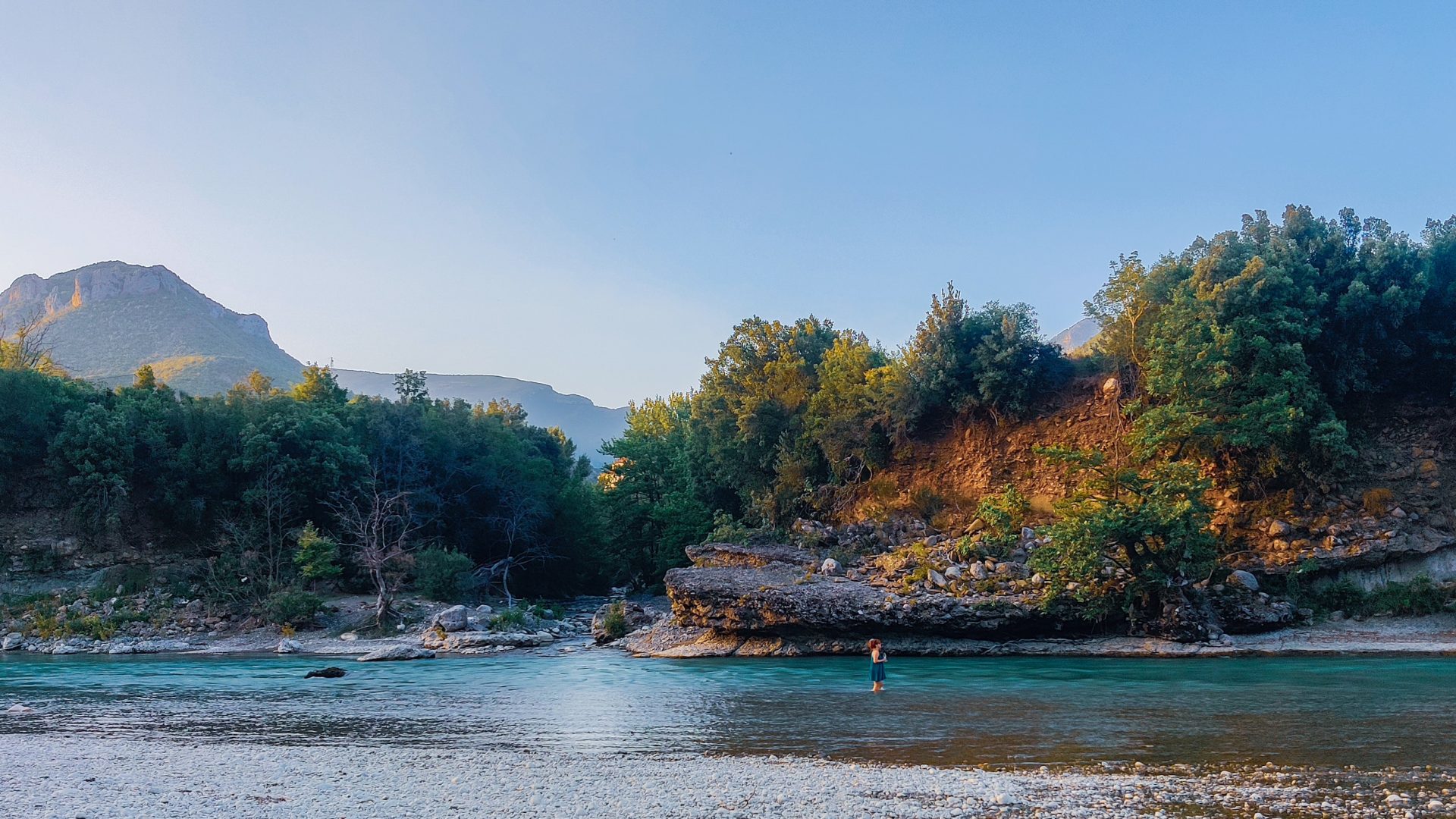
The 170-mile Vjosë River is one of the only undammed waterways left in Europe. Fortunately, what’s known as Europe’s “Blue Heart”—and the thousands of species and people that call it home—is on track to be protected.


The 170-mile Vjosë River is one of the only undammed waterways left in Europe. Fortunately, what’s known as Europe’s “Blue Heart”—and the thousands of species and people that call it home—is on track to be protected.
From its headwaters in the Pindus Mountains of Greece to where its mouth flows into the Adriatic Sea on Albania’s southern coast, the Vjosë River’s turquoise-blue waters tumble through white cliffs and green valleys unimpeded by dams, reservoirs, or diversions for its entire 170-mile length.
The Vjosë’s many tributaries are likewise free-flowing, making it the only river in Central Europe that hasn’t been reshaped by human hands. Now, the Albanian government, with the help of local and international non-profits and the clothing brand Patagonia, is going to make sure the river stays wild by designating it a national park.
“This is an opportunity to protect one of Europe’s rivers, really one of the crown jewel rivers of Europe,” Ryan Gellert of Patagonia told The Associated Press.
Presently, the Vjosë is home to a degree of biodiversity unmatched anywhere in Central Europe. Along its length are a number of habitat types deemed rare or important for conservation by European researchers, and several contested sites for new infrastructure construction. The biggest threat to free-flowing rivers is constructing facilities to generate hydroelectricity. This valuable and apparently “clean” energy source involves dams and reservoirs that interrupt the river’s natural flow and fundamentally change habitats of the fish, flora and fauna that call the river home. In the case of the Vjosë, nearly 1,100 animal species, 13 of which are already threatened, live along the river.
But like most so-called environmental issues, humans, not just flora and fauna, would feel the consequences of damming the Vjosë too. The residents of the Albanian village of Kutë, which would have been flooded for a proposed hydropower project, sued to stop construction in 2017. They won the case, which was also the first environmental lawsuit in Albania.
Development will be entirely off the table once the Vjosë is designated a national park, and special attention will be paid to conservation and tourism, though the nuts and bolts of what it will take for the river to achieve that status are still being worked out.
In December, the working group assembled by the Albanian Ministry of Tourism and the Environment—which included non-profits, community groups, and Patagonia—published an efficacy study and roadmap to getting the Vjosë designated a national park.
The proposal follows definitions established by the International Union for the Conservation of Nature, a non-profit that organizes public and private groups around conservation issues. As a “Category II” protected area, the future National Park will be managed for both conservation and recreation. Integral to both phases of the plan is developing local ecotourism in communities along the Vjosë, in part to make up for the lost income opportunity from hydropower.
The expert recommendation includes two phases. First, Albanian officials will consult with local governments and community organizations in the regions through which the Vjosë and its tributaries flow. The ultimate goal of phase I is to determine a boundary line for the National Park this year, which will be officially established by a Parliamentary vote. The second phase, which focuses on incorporating the places along the river that flood every 30 to 50 years, will take place over years. The aim is to fold those areas into the park’s protection, but will involve more rounds of public comment and local engagement.
Although the exact boundary is still TBD, Albania’s Prime Minister Edi Rama told the AP it will be the largest in the country, or at least 20,000 acres. In the meantime, the river and its banks and tributaries are protected zones, which means that no further development will occur there.
In the campaign to raise awareness around the efforts to protect the Vjosë, Patagonia and partners dubbed the river the “Blue Heart of Europe,” even making a film of the same name. And if it becomes a national park, that Blue Heart won’t just be protected; it will also be accessible to visitors hoping to see its unique wildness and beauty.

Miyo McGinn is Adventure.com's US National Parks Correspondent and a freelance writer, fact-checker, and editor with bylines in Outside, Grist, and High Country News. When she's not on the road in her campervan, you can find her skiing, hiking, and swimming in the mountains and ocean near her home in Seattle, Washington.








Can't find what you're looking for? Try using these tags: